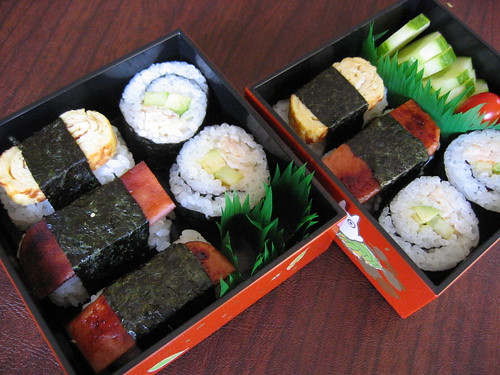If you are unfamiliar with the concept of Steampunk,
Scifipedia explains it rather succinctly as something that, "is set in an era or world where steam power is still widely used—usually the 19th century, and often set in Victorian era England—but with prominent elements of either science fiction or fantasy, such as fictional technological inventions like those found in the works of HG Wells and Jules Verne .."
Of course, there's a lot more too it then that. To me, as (obviously) a fan of the Victorian and Edwardian, it speaks of a time when there was still a possibility for adventure, where corners of the world still lurked undocumented. It makes one wonder what might have been, without the advent of plastics, with style and manners retaining a softer look.
Of course, promptly after my little mental airship into fantasy, the cook in me asks, what about the food? I think there are a couple of ways someone might go on this.
The Gimmicky:
This is what we get into a lot when I see this topic discussed on various
Steampunk boards. It is, to me at least, the equivalent of taking just any old brown clothing item, tossing cogs and watch bits on it, and calling it a day. Not that sepia and cogs aren't cool--
this cake has been making the rounds online and is very well done, to say the least. Huge, Rube Goldberg-esque machines also don't do the trick for me. Technology has always been about doing something faster, easier, or more efficiently.
If you want to discuss Victorian diets and food gimmicks, that actually leads in some interesting directions, particularly since that era invented the concept of "health food". The Reverend Sylvester Graham invented the the graham cracker, convinced that a diet high in fat led to sexual excess (which, according to Snope's, was actually one of his
lesser food eccentricities). A similar eclectic vegetarian and Seventh-Day Adventist, bored with the non-
meat oriented options for the Victorian breakfast table, developed
corn flakes. Or, you have salisbury steak. The good Dr. Salisbury firmly believed that
"vegetables and starchy foods could produce substances in the digestive system which poison and paralyze the tissues and can cause heart disease, tumors, mental illness and tuberculosis."
The Historic:
I have a soft spot for this one. English cuisine traditionally gets a bad rap, but if you go back to Georgian period cooking, or look at the French-Inspired haute-cuisine of the turn of the last century, you find a lot of flavors that have become classics (with many people clueless about how delightful the original was), or have in a mass-produced age fallen by the wayside for no good reason. For a crash course in 19th Century cooking, I'd strongly recommend some of the links in the sidebar, as well as the book
Last Dinner on the Titanic, which provides an excellent cross-section of fare for First, Second, and Third class passengers(the last of which, incidentally, eating more nutritiously then the average modern American home). I would also recommend some of my recent posts, such as that about
Peaches Melba.
The Mad Scientist:
Yes, there is a time and place for steam in the kitchen; what enthusiasts often forget is that there are literally hundreds of kitchen gadgets that we have compliments of the Victorians!
The can opener, 1858(with cans first coming into use during the Napoleonic war). The first egg beater, invented in
Rhode Island in 1870. Gelatin desserts and aspic creations meant hours of slaving over a hot stove, and immense talent in the chef. Scientists started experimenting with pressure cookers clear back in the 17th Century, billed as,
"A New Digester or Engine, for softaing bones, the description of its makes and use in cookery, voayages at see, confectionary, making of drinks, chemistry, and dying, etc.", but started to really come into it's own with industrial kitchens. Personally, I can't think of a better example of Steam in the kitchen!
The Exotic:
Yes, traditional 19th Century food is often seen as boring, but it really was an age of discovery. Foods began to circle the globe. Curry and exotic spices which hadn't been common since the Middle Ages began to make a regular appearance in European cooking. Foods like tomatoes and potatoes from the Colombian Exchange circled the globe with Caucasian colonists, permanently changing the face of food. There were also bad affects--particularly when it came to the mass-produced, nutritionally deficient food that became desired as a symbol of position and upward mobility under Colonial Rule. The same thing also occurred with American immigrants, since cooking the "American Way" was considered a
necessary part of fitting in, leaving old customs, and ways of dressing and eating at the door as much as possible.
So what can be taken from all of the above? I personally believe that Steampunk Food should be like Steampunk literature--taking what was in the direction of what might have been. Instead of trying to slap "steam" on top of something already in use, or clinging to historical authenticity, there are some questions that we cooking enthusiasts should be asking ourselves:
What was the big, new, thing back in the day?
How would it have been different with quicker global travel, a la airship(the things that were amazing treats on the Titanic are an excellent resource for this)?
What would a crew have eaten that could cover the globe in a month or so? Like tattoos told the story of where a sailor had been, what flavors and ingredients would have been popular had shelf life not been such an issue? Would they have remained strange and lower-class, or been embraced by chefs like Escoffier?
With a little research, the possibilities really are endless! Not only that, it's a great reason to start to cook from scratch, and really come to understand the degree to which we stand on the Victorian's shoulders in the kitchen, for better or worse.























